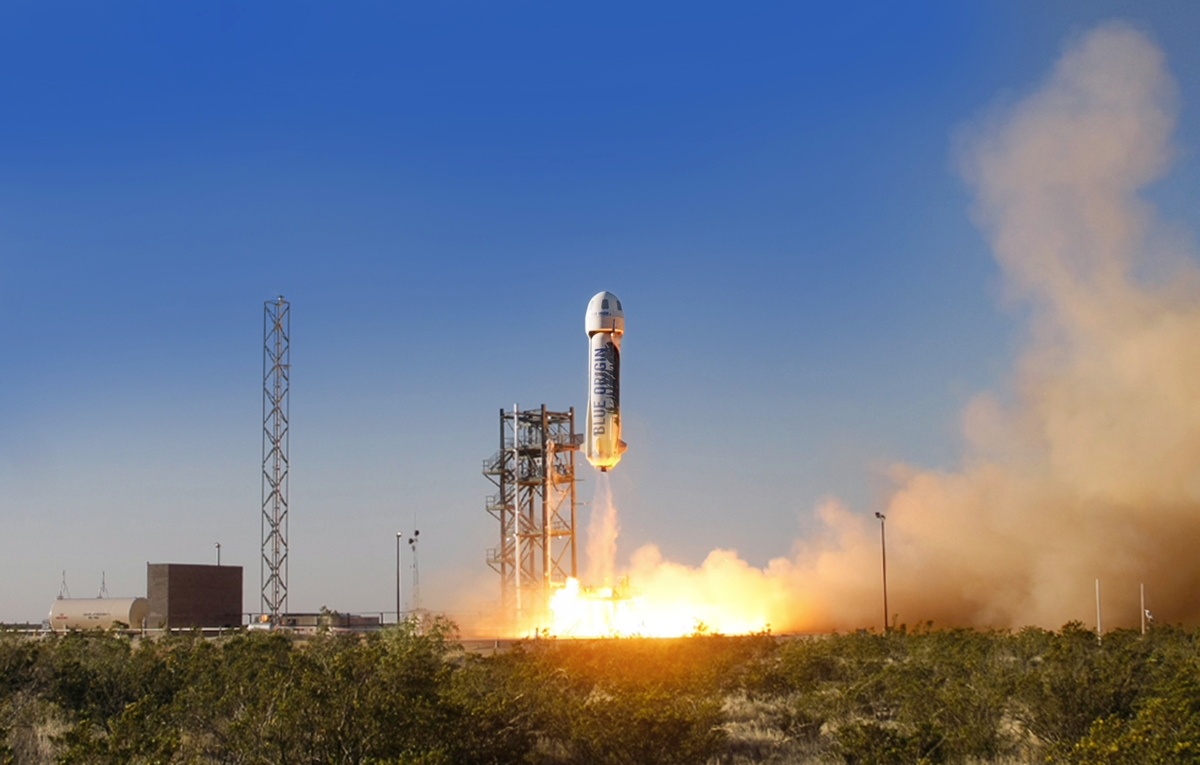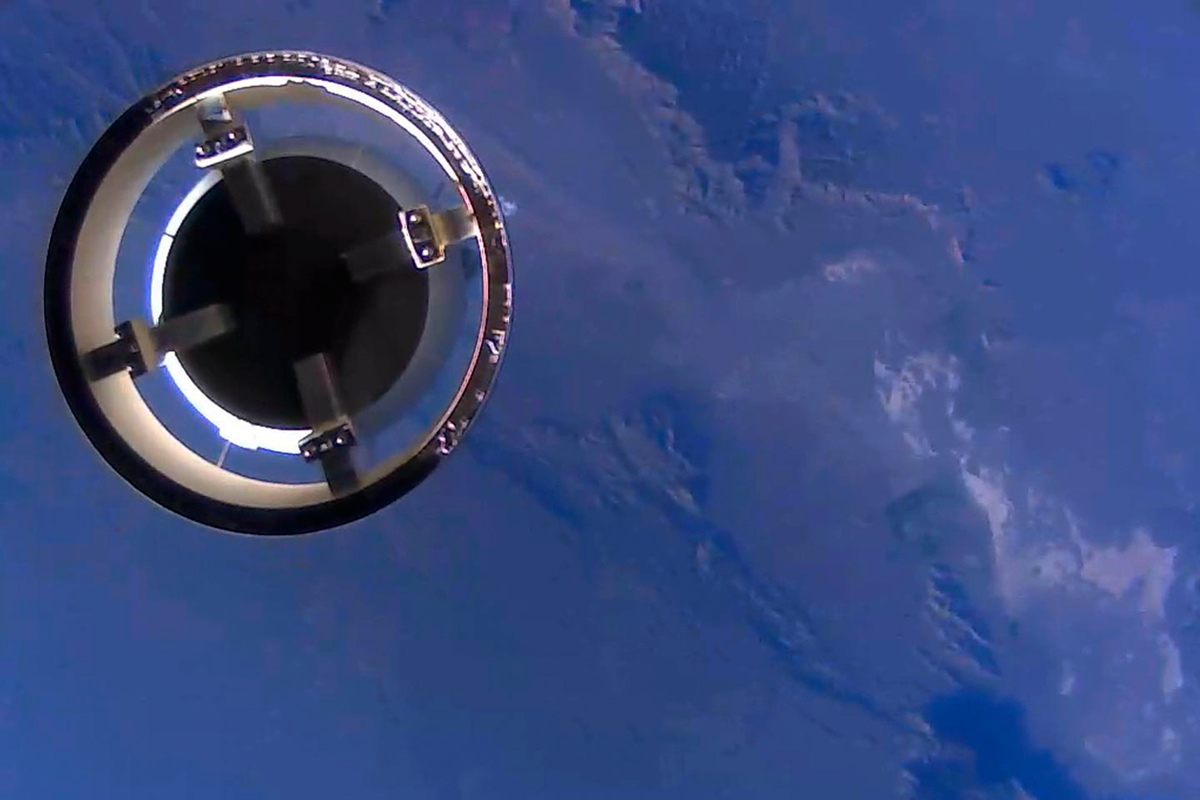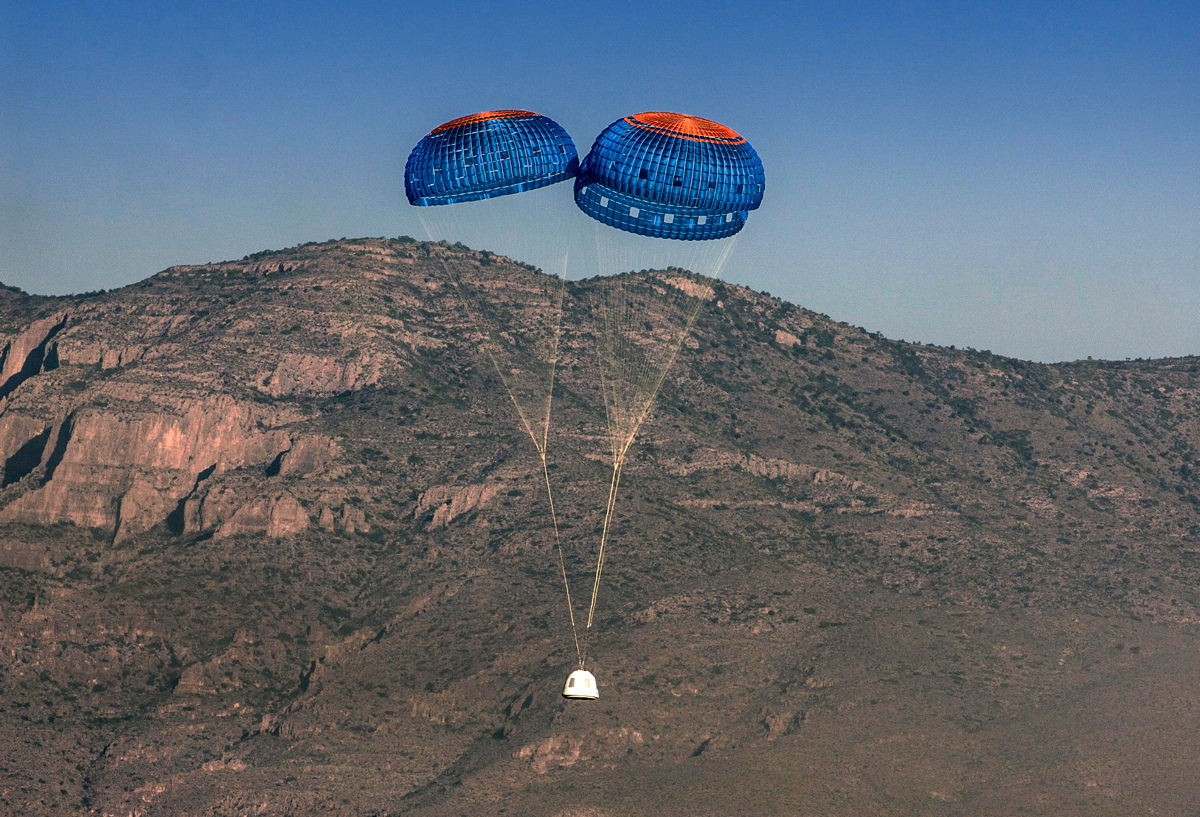Jeff Bezos' Blue Origin Launches Private Spaceship Test Flight (Photos, Video)

The private spaceflight company Blue Origin launched a surprise test flight of its suborbital New Shepard spaceship on Wednesday (April 29), a mission that successfully demonstrated the space capsule but failed to recover its reusable rocket booster.
Blue Origin, a company founded by Amazon.com's billionaire founder Jeff Bezos, launched the New Shepard spacecraft from its West Texas proving grounds. Video of the New Shepard spacecraft launch shows it soaring up to an altitide of 307,000 feet (93,573 meters).
"The in-space separation of the crew capsule from the propulsion module was perfect," Bezos wrote in a statement. "Any astronauts on board would have had a very nice journey into space and a smooth return." [Blue Origin's Spaceship Tests in Photos]
A longer, 6-minute video of the New Shepard's launch shows the vehicle rising into the blue Texas sky, with the passenger capsule separating from its booster and parachuting back to Earth. The two videos released by Blue Origin did not show the descent of the rocket booster — dubbed the "propulsion module"— which is designed to make a vertical landing and be reused on future flights.
In his statement, Bezos confirmed that the rocket booster was lost during the test.
"Of course one of our goals is reusability, and unfortunately we didn't get to recover the propulsion module because we lost pressure in our hydraulic system on descent," Bezos wrote. "Fortunately, we've already been in work for some time on an improved hydraulic system. Also, assembly of propulsion module serial numbers 2 and 3 is already underway — we'll be ready to fly again soon."
Wednesday's New Shepard test flight reached a maximum altitude of 58 miles (93 kilometers) — just a few miles short of the 62-mile-high (100 km) boundary between Earth and space. The demonstration flight occurred just weeks after Blue Origin President Rob Meyerson announced that test flights would begin this year.
Get the Space.com Newsletter
Breaking space news, the latest updates on rocket launches, skywatching events and more!
"They could go as quickly, in the early days, as on a monthly schedule — a month between tests," Meyerson said during the April 7 announcement. "But we expect over the next couple of years to be flying regularly with the New Shepard vehicle."

Blue Origin has been quietly developing reusable rocket engines and spacecraft to launch paying passengers into space.
The New Shepard spacecraft is designed to launch at least three people — and possibly more, depending on other payload — on round trips to suborbital space. It is powered by Blue Origin's BE-3 rocket engine, which generates 110,000 pounds of thrust and is fueled by liquid hydrogen and liquid oxygen.
While the company has not released any pricing details for its passenger flights, Bezos did unveil an online sign-up portal for potential customers in Wednesday's announcement. According to that portal, a full capsule could carry six people into space.

In his statement, Bezos added that Blue Origin has also already begun design work on a larger, orbital spacecraft that it calls the Very Big Brother to New Shepard.
"We continue to be very big fans of the vertical takeoff , vertical landing (VTVL) architecture," Bezos wrote. "We chose VTVL because it's scalable to very large size."
The Very Big Brother is "an orbital launch vehicle that is many times New Shepard's size," according to Bezos. It will be powered by the company's more powerful BE-4 rocket engine.
Email Tariq Malik at tmalik@space.com or follow him @tariqjmalik and Google+. Follow us @Spacedotcom, Facebook and Google+. Original article on Space.com.
Join our Space Forums to keep talking space on the latest missions, night sky and more! And if you have a news tip, correction or comment, let us know at: community@space.com.

Tariq is the Editor-in-Chief of Space.com and joined the team in 2001, first as an intern and staff writer, and later as an editor. He covers human spaceflight, exploration and space science, as well as skywatching and entertainment. He became Space.com's Managing Editor in 2009 and Editor-in-Chief in 2019. Before joining Space.com, Tariq was a staff reporter for The Los Angeles Times covering education and city beats in La Habra, Fullerton and Huntington Beach. In October 2022, Tariq received the Harry Kolcum Award for excellence in space reporting from the National Space Club Florida Committee. He is also an Eagle Scout (yes, he has the Space Exploration merit badge) and went to Space Camp four times as a kid and a fifth time as an adult. He has journalism degrees from the University of Southern California and New York University. You can find Tariq at Space.com and as the co-host to the This Week In Space podcast with space historian Rod Pyle on the TWiT network. To see his latest project, you can follow Tariq on Twitter @tariqjmalik.









